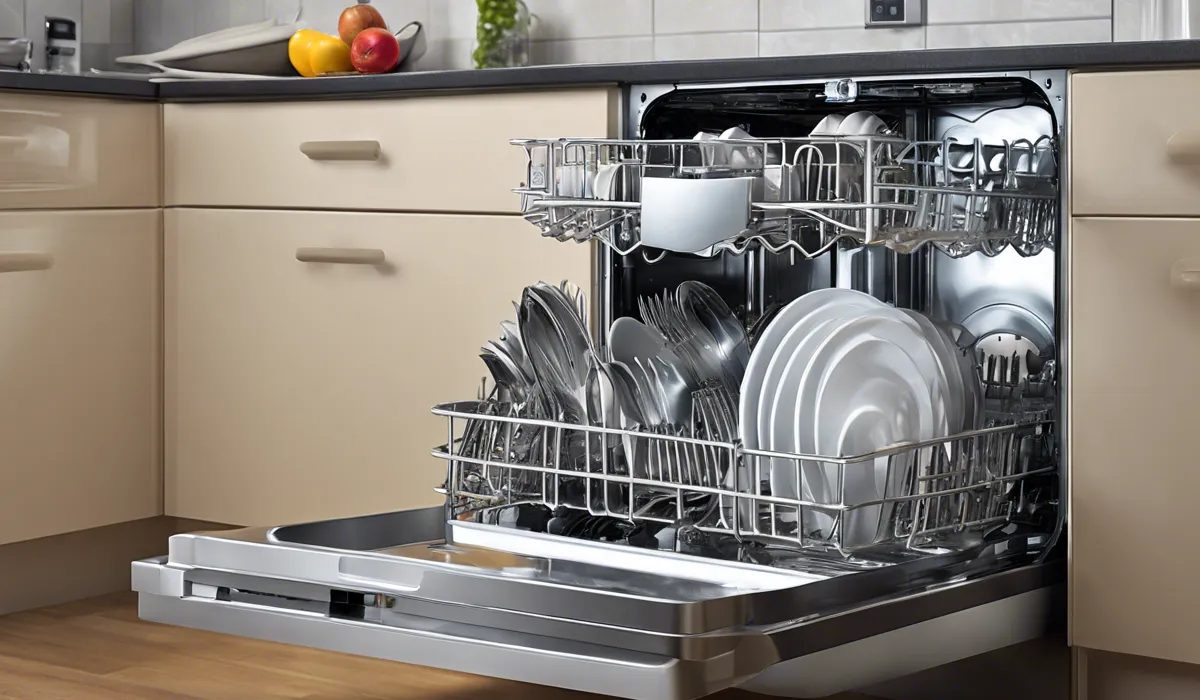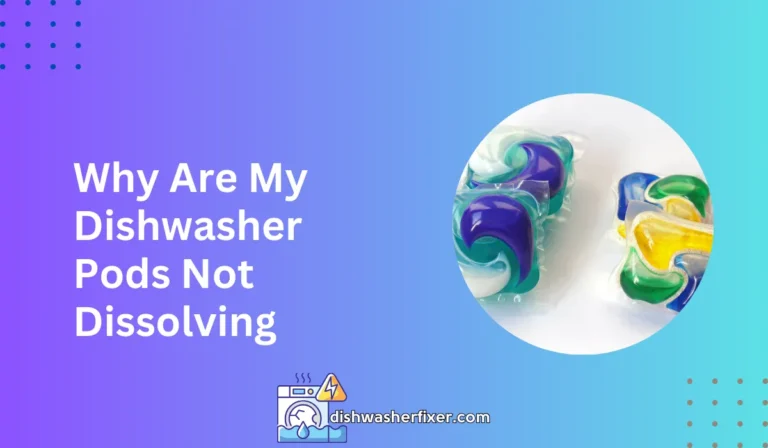How to Maintain Dishwasher: 5 Key Steps for Longevity
To maintain a dishwasher, regularly clean the filter, wipe the gasket, and use a vinegar cycle to remove buildup. Inspect and unclog spray arms as needed. Following these steps ensures optimal performance and longevity.
Regular Cleaning Routine

Emptying the Dishwasher
Ensuring your dishwasher is empty is the first step towards its maintenance. After each cycle, remove all dishes and utensils to prevent any leftover food from sticking and causing odors or mold.
It’s a simple but crucial task that keeps your machine ready for the next wash.
Cleaning the Filters
Filters trap food particles and prevent them from redepositing on your dishes. Over time, these filters can become clogged, reducing your dishwasher’s efficiency.
To clean them, remove the bottom rack, twist out the filter, and rinse it under running water.
For stubborn debris, use a soft brush. Do this at least monthly to ensure optimal performance.
Wiping Down the Spray Arms
The spray arms are responsible for distributing water throughout the dishwasher. They can become clogged with food particles or mineral buildup, leading to poor cleaning results.
Regularly inspect these arms and use a toothpick to clear out any blockages in the holes. Wipe them with a damp cloth to remove any buildup.
Inspecting the Spinning Mechanisms
Spinning mechanisms are vital for dispersing water and detergent. Check to make sure they move freely and are not obstructed. If you notice any resistance or irregular movement, investigate further to address any issues.
Checking and Cleaning the Door Seals
Door seals keep water contained within the dishwasher. Over time, these can accumulate grime, leading to leaks or decreased efficiency.
Clean them regularly with a damp cloth to remove any food particles or residues. This will help maintain the seal’s integrity and prevent leaks.
Using a Dishwasher Cleaning Agent or Vinegar for a Maintenance Wash
Occasionally, you should run an empty cycle with a dishwasher cleaning agent or white vinegar. This helps in dissolving any mineral buildup and sanitizing the interior.
Pour a cup of white vinegar into a dishwasher-safe bowl on the top rack and run a hot-water cycle. This simple maintenance wash can greatly extend the life of your machine.
Preventative Maintenance

Pre-rinsing Dishes to Avoid Clogging
Pre-rinsing dishes can prevent larger food particles from clogging the filters and spray arms.
However, it’s not necessary to wash the dishes thoroughly before loading them, as modern dishwashers are equipped to handle a certain level of soiling.
Loading the Dishwasher Correctly
Proper loading of your dishwasher ensures that all items get cleaned effectively and reduces the risk of damaging the racks or spray arms.
Place larger items on the bottom rack facing inwards and smaller items on the top rack. Make sure nothing obstructs the spray arms or the detergent dispenser.
Using the Right Detergent and Rinse Aid
Selecting the appropriate detergent and rinse aid is crucial for both cleaning performance and the maintenance of your dishwasher.
Use products specifically designed for dishwashers to avoid any residue buildup. Following the manufacturer’s recommended amount will prevent over-sudsing and ensure a spot-free finish.
Checking and Tightening Any Loose Parts
Loose parts can lead to rattling noises and potential damage. Periodically inspect the racks, spray arms, and other components for any looseness. Tighten screws or fasteners as needed to keep everything secure and functioning correctly.
Avoiding Non-Dishwasher Safe Items
Some items, such as wooden utensils or certain plastics, are not meant for the dishwasher.
Placing non-dishwasher safe items inside can lead to damage, both to the items themselves and potentially to the dishwasher. Always check the manufacturer’s instructions to determine if an item is dishwasher safe.
Monitoring for Leaks or Unusual Noises
Keep an ear out for any strange sounds coming from your dishwasher, such as grinding or thumping noises.
These could indicate a problem with the motor or other internal components. Additionally, regularly check for any signs of water leakage, which could point to a compromised seal or hose.
Addressing Common Issues

Dealing with Hard Water and Limescale Buildup
Hard water can leave limescale deposits in your dishwasher, reducing its efficiency over time. To combat this, use a specialized dishwasher salt or water softener, and regularly clean the machine with vinegar or a limescale remover.
Unclogging and Cleaning the Drain
A clogged drain can cause water to back up and lead to poor cleaning results or odors.
To unclog the drain, remove any visible debris, and use a non-corrosive drain cleaner or a mixture of baking soda and vinegar followed by hot water to clear the pipes.
Troubleshooting Electronic or Functional Problems
If your dishwasher displays error codes or isn’t functioning correctly, refer to the user manual for troubleshooting steps. Often, simple resets can resolve electronic issues. For persistent problems, it may be necessary to consult a professional.
Replacing Worn Out Parts like Racks or Silverware Baskets
Over time, dishwasher racks or silverware baskets can become worn or damaged. Inspect these parts regularly and replace them if they show signs of rust or deterioration to prevent damage to your dishes and ensure proper cleaning.
Professional Maintenance and When to Call a Technician
While many dishwasher maintenance tasks can be handled at home, some issues require professional attention. If you encounter water leaks, electronic failures, or complex mechanical problems, it’s time to call a technician.
Regular professional check-ups can also preemptively address potential issues, ensuring the longevity of your dishwasher.
FAQs About Maintaining a Dishwasher
How often should I clean my dishwasher filter?
You should clean your dishwasher filter at least once a month to ensure optimal performance.
What is the best way to clean the gasket of my dishwasher?
Wipe the gasket with a damp cloth to remove debris and prevent leaks. Do this regularly, especially after heavy use.
How can I remove buildup from my dishwasher?
Run a vinegar cycle: Fill a dishwasher-safe cup with white vinegar, place it on the upper rack, and run a cycle without dishes to remove buildup.
How do I inspect and unclog dishwasher spray arms?
Check the spray arms periodically for clogs and clear any debris with a toothpick or similar tool to ensure water can flow freely.
Why is it important to maintain my dishwasher?
Maintaining your dishwasher ensures optimal cleaning performance and extends the appliance’s lifespan.
Final Thoughts
Maintaining a dishwasher involves regular cleaning of the filter, wiping down the gasket, and using a vinegar cycle for removing buildup.
It also requires inspection and unclogging of spray arms as necessary. Diligent upkeep is essential for the dishwasher’s optimal performance and extended lifespan.





